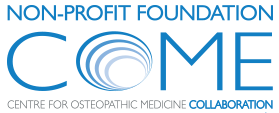Cerebral Perfusion Changes After Osteopathic Manipulative Treatment: A Randomized Manual Placebo-Controlled Trial
Osteopathic Manipulative Treatment (OMT) is a therapeutic approach aimed at enhancing the body’s self-regulation focusing on somatic dysfunctions correction. Despite evidence of OMT effectiveness, the underlying neurophysiological mechanisms, as well as blood perfusion effects, are still poorly understood. The study aim was to address OMT effects on cerebral blood flow (CBF) in asymptomatic young volunteers as measured by Magnetic Resonance Arterial Spin Labeling (ASL) method. Thirty blinded participants were randomized to OMT or placebo, and evaluated with an MRI protocol before manual intervention (T0), immediately after (T1), and 3 days later (T2). After T0 MRI, participants received 45 min of OMT, focused on correcting whole body somatic dysfunctions, or placebo manual treatment, consisting of passive touches in a protocolled order. After treatment, participants completed a de-blinding questionnaire about treatment perception. Results show significant differences due to treatment only for the OMT group (OMTg): perfusion decreased (compared to T0) in a cluster comprising the left posterior cingulate cortex (PCC) and the superior parietal lobule, while increased at T2 in the contralateral PCC. Furthermore, more than 60% of participants believed they had undergone OMT. The CBF modifications at T2 suggest that OMT produced immediate but reversible effects on CBF … MORE







